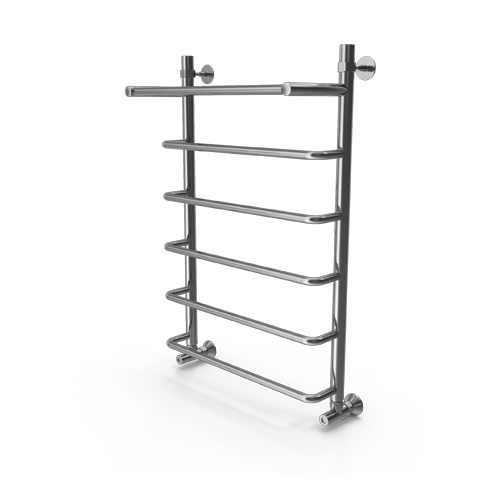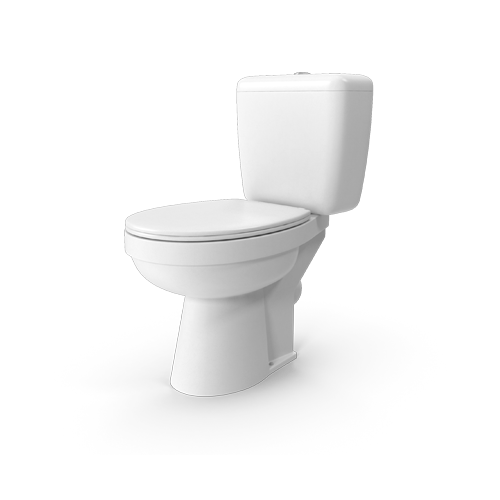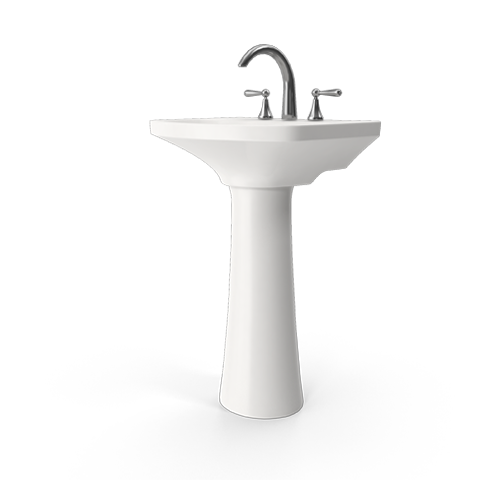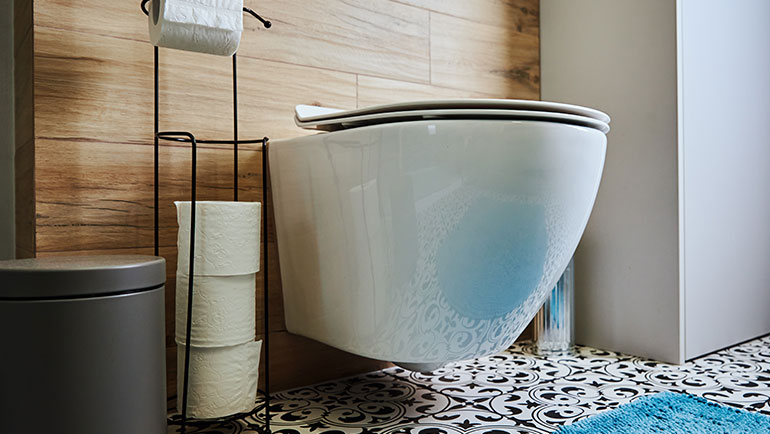How to Get Rid of Limescale in Toilets
Limescale is a common problem that many households face, especially when it comes to the toilet. If you’re struggling to keep your toilet free from this stubborn build up, don’t worry – we’ve got you covered. In this article, we will guide you through the process of understanding limescale, tackling it head-on, preventing future build-up, and even discuss the environmental impact of limescale removal. So, let’s dive in and learn how to get rid of limescale in your toilet once and for all.
Understanding the problem: What is limescale?
Before we delve into the nitty-gritty of limescale removal, it’s important to understand what limescale actually is. Limescale, also known as calcium carbonate, is a hard and chalky deposit that forms when water evaporates, leaving behind mineral deposits. These deposits can accumulate over time, leading to unsightly stains and a reduction in the overall cleanliness of your toilet.
Furthermore, limescale is not just limited to your toilet bowl; it can also affect other household appliances such as kettles, coffee makers, and shower heads. The impact of limescale is not only aesthetic but can also lead to decreased efficiency and a shorter lifespan of these appliances.
The science behind limescale formation
So, how exactly does limescale form? When water with high mineral content, particularly calcium and magnesium, is left to sit in your toilet bowl, it begins to evaporate. As the water evaporates, it leaves behind these minerals, resulting in the formation of limescale. The longer the water is allowed to sit, the more limescale will accumulate.
Moreover, the formation of limescale is not just a cosmetic issue; it can also have implications for the environment. The excess use of cleaning products to tackle limescale can lead to chemical pollution in waterways, affecting aquatic life and ecosystems.
How limescale affects your toilet
Limescale not only looks unsightly, but it can also cause functional issues with your toilet. Over time, the build-up can result in blockages and reduced water flow, potentially leading to expensive plumbing repairs. Additionally, limescale can harbour bacteria and other microorganisms, compromising the hygiene of your toilet. Therefore, it’s essential to tackle limescale as soon as you notice it.
Furthermore, the presence of limescale in your toilet can impact water efficiency, as the deposits can interfere with the proper flushing mechanism. This inefficiency not only wastes water but also contributes to higher water bills, making limescale not just a cleanliness issue but also a financial concern.
The tools you’ll need to tackle limescale
Now that you understand the problem, let’s gather the necessary tools to tackle limescale effectively. Fortunately, you don’t need any fancy or expensive equipment. Most of the items you’ll need can be found right in your own home. Here are a few household items that can help:
- Vinegar: A natural acid that can dissolve limescale
- Baking soda: An abrasive cleaner that can remove tough stains
- Lemon juice: A natural acid that can help break down limescale
- Old toothbrush or scrub brush: For scrubbing away the limescale
If you’re dealing with particularly stubborn limescale or have tried household remedies without success, you might consider investing in professional cleaning products. These products are specifically formulated to tackle tough cases of limescale and can be found at your local supermarket or hardware store.
Another effective household item for tackling limescale is citric acid. This natural acid, commonly found in citrus fruits, is a powerful limescale remover. Simply dissolve a small amount of citric acid in warm water and use it to soak or scrub away the stubborn deposits. Citric acid is also environmentally friendly, making it a great choice for those looking for eco-friendly cleaning solutions.
For areas with heavy limescale build-up, such as shower heads or faucets, you can create a paste using baking soda and water. Apply the paste to the affected areas and let it sit for a few hours before scrubbing it off with a brush. This gentle abrasive action helps to break down the limescale without damaging the surface underneath. Remember to rinse the area thoroughly after cleaning to remove any residue and reveal a sparkling, limescale-free surface.
Step-by-step guide to removing limescale
Now that you have the tools ready, let’s walk through a step-by-step guide to effectively remove limescale from your toilet.
Preparing your toilet for cleaning
Begin by turning off the water supply to your toilet. This will prevent any unwanted splashing or overflow during the cleaning process. Next, flush the toilet to empty the bowl as much as possible. This will make it easier to apply the cleaning solution directly to the affected areas.
Before starting the cleaning process, it’s advisable to ventilate the bathroom by opening a window or turning on the extractor fan. Proper ventilation will help to reduce the strong odours that may be emitted during the cleaning process. Additionally, ensure you wear rubber gloves to protect your hands from the cleaning solution and limescale residue.
Applying your chosen cleaning solution
Depending on the severity of the limescale build-up, you can choose from a variety of cleaning solutions. One effective and natural option is to pour vinegar or lemon juice directly onto the limescale. Allow the solution to sit for at least 30 minutes to an hour, giving it time to break down the deposits. If using a professional cleaning product, make sure to follow the instructions provided.
For a more environmentally friendly approach, you can create a paste using baking soda and water. Apply the paste to the limescale and leave it to work its magic for a similar amount of time. The gentle abrasiveness of the baking soda will help to loosen the limescale, making it easier to remove during the scrubbing process.
Scrubbing and rinsing for a limescale-free finish
Once the cleaning solution has had time to work its magic, it’s time to scrub away the limescale. Use an old toothbrush or scrub brush to gently scrub the affected areas. Be sure to apply enough pressure to remove the build-up, but avoid using excessive force that could potentially damage the porcelain. Rinse the toilet thoroughly with clean water to wash away any residue and admire your limescale-free finish.
After completing the cleaning process, it’s a good idea to flush the toilet a few times to ensure all traces of the cleaning solution are completely removed. This will help prevent any potential damage to the toilet components from prolonged exposure to the cleaning chemicals. Finally, dry the toilet bowl with a clean cloth to prevent water spots and leave your toilet sparkling clean.
Preventing future limescale build-up
Now that you’ve successfully removed limescale from your toilet, it’s important to take proactive measures to prevent its future build-up. Here are a few tips:
Did you know that limescale is caused by the build-up of calcium carbonate, a mineral commonly found in hard water? When hard water evaporates, it leaves behind these mineral deposits, which can accumulate over time and form stubborn limescale. This not only looks unsightly but can also lead to clogging and damage to your plumbing system.
Regular cleaning routines to adopt
Maintaining a regular cleaning routine is crucial in preventing limescale from returning. Regularly clean your toilet using mild cleaners or natural acids, such as vinegar or lemon juice. By doing so, you can remove any early signs of limescale and prevent it from becoming a major problem.
In addition to cleaning the visible parts of your toilet, don’t forget to pay attention to areas that are often overlooked, such as under the rim and around the waterline. These hidden spots can also harbour limescale and bacteria, so a thorough cleaning regimen is essential for keeping your toilet sparkling clean and limescale-free.
Products to help prevent limescale
Another effective way to prevent limescale is to use products specifically designed to inhibit its formation. Look for toilet bowl cleaners or additives that contain anti-limescale properties. These products can help break down minerals and prevent them from adhering to the toilet surface.
Furthermore, consider installing a water softener in your home to reduce the hardness of your water supply. By softening the water, you can significantly decrease the likelihood of limescale build-up not only in your toilet but also in other household appliances like kettles and showers. Investing in a water softening system can save you time and effort in the long run by minimising the need for frequent descaling and cleaning.
The environmental impact of limescale removal
While it’s important to keep our toilets clean and free from limescale, it’s also crucial to consider the environmental impact of our cleaning efforts. Here are a few eco-friendly alternatives to traditional limescale removal methods:
Eco-friendly alternatives for limescale removal
Instead of resorting to chemical cleaners, you can opt for natural alternatives. For instance, you can use a paste made of baking soda and water to scrub away limescale. Additionally, white vinegar or lemon juice can be used as natural acids to dissolve limescale. These eco-friendly options not only reduce the use of harsh chemicals but also minimise their impact on the environment.
Disposing of cleaning products responsibly
When using commercial cleaning products, it’s important to dispose of them responsibly. Check the packaging for instructions on proper disposal methods. Many local recycling centres accept empty cleaning product containers, so consider recycling them instead of throwing them in the trash.
By following these tips and guidelines, you can successfully get rid of limescale in your toilet and maintain a clean and hygienic bathroom. Remember to regularly clean and be proactive in preventing limescale build-up to keep your toilet sparkly clean for years to come.



